
views
Planning Your Gallery

Analyze the current market. The size, scope, and vision of the art gallery will depend on what is already available in the city or town where the new art gallery will open. Rely on experts such as artists and members of the business community to assess the market for your gallery. Try to gauge whether or not a type of art you are interested in or knowledgable about is adequately represented by current galleries in the area. If not, you have a starting place for your vision.

Clarify your vision. In order to successful, an art gallery must have a well-defined vision. This vision is the purpose and identity of the gallery and informs everything from the design of the space and choice of artworks to the clientele the gallery will seek to attract. Think about what type of art you enjoy and also what types of work people in your area would be interested in. At the intersection of those two types, you can find your vision. Make sure that you are able to create a niche by having a separate vision from other galleries in town or in your area. Keep your vision consistent. Don't back down or change your vision just because sales are low initially.

Become an expert in your niche. Choose a type of work that you have a depth of knowledge in. Work to become extremely knowledgable in each piece you place in your gallery, even if you don't know everything about the art world in general. Buyers will feel more comfortable if you are able to explain each piece in depth and place it in context within the genre. For example, you should be able to explain the importance of the originality, socio-historical significance, meaning, subject matter, and modern relevance of each piece. Make sure you can explain your art in a way that is not intimidating or off-putting to inexperienced visitors. That is, don't drop into high-level art lingo with new customers until you become aware of their own experience level.
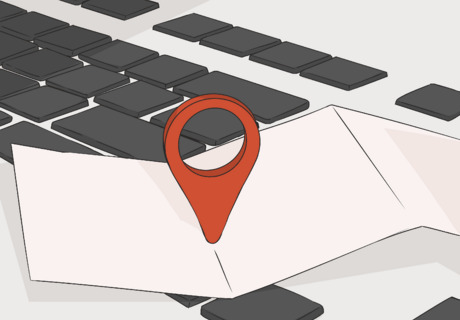
Choose a location. The art gallery location should be visible, easy to get to, and have enough interior space to house several collections of art. Many art galleries host parties and receptions for the artists, so the space will need to be able to accommodate food and drinks, as well as be hospitable to people mingling. Think realistically about how much you can spend on gallery space. You may not be able to afford a lease in the best part of town or for a huge space. However, make sure that your space is adequately spacious for your purposes and in a safe part of town. Try looking in areas populated by other galleries, near art schools, or in up and coming areas. If possible, look for a location with extra space so that you can expand later if you need to.

Design the interior of the gallery. Interior décor should be minimal and basic so that it does not compete with or take away from the art that will be on display. As with all aspects of your gallery, the interior design should match up with your vision. Make sure to include enough room to admire the art from a distance and to have open space from events. Leave room for a business office for yourself and for storage of pieces not currently on display.

Choose a business structure. Businesses can have a variety of organizational structures, from sole proprietorships to corporations and partnerships. Each has its own advantages. Sole proprietorships simplify taxes for the business owner by combining their personal finances with those of the business. However, forming a corporation or LLC can protect the founder(s) from personal liability (their assets are separated from the those of the business). Incorporating a business requires another set of steps and these steps will vary based upon your location.

Create a business plan. Your business plan establishes how your gallery will get started, run its operations, market itself, and grow over time. Start with an executive summary of your gallery, including a summary of the rest of information in the plan and a brief description of your growth plan. Next, describe your business, including information like what type of art you will be focusing on, what market you hope to serve, and how you will carve out a niche among your competition. Include an analysis of your competitors and market. Set out in clear terms your management structure, including ownership shares and profiles of managers. Explain your funding requirements and how you plan to get that funding. This is important as your business plan will be used when acquiring business loans or investor money. Include growth plans and revenue projections over the years. Explain how you plan to make money. Art galleries typically make a commission on sales. This can be as high as 50 percent for two-dimensional work and 40 percent for three-dimensional work.
Setting Up Your Gallery

Acquire funding. Funding an art gallery is similar to funding any other business. You will need money to lease your space, redecorate, and pay for utilities are other expenses. If you can afford it, your best option is to finance the business yourself, either alone or with your business partners. This will free you from having to pay off debt later. If this is not possible, you can always apply for business loans from a local bank or the Small Business Administration (SBA). In some cases, you may also have the option of gaining investors who will give you startup money in exchange for equity (a share of your business and its future profits).
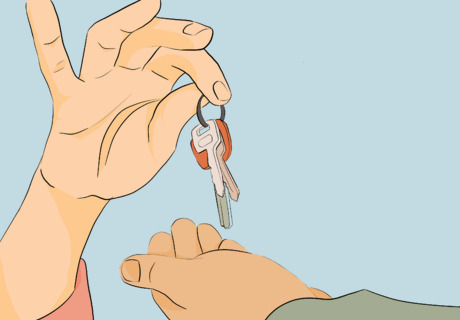
Lease your gallery space. When you've located a space that love, make sure that you can afford it. You won't last long if your expenses (including rent) outweigh your sales and funding reserves. Try negotiating down an ideal space that is slightly out of your price range.

Register as a business. In order to operate as a business, you will have to register a "doing business as" (DBA) name. This name must be different than just your name or the names of you and your partners. If you are organized as an LLC or corporation, you don't have to register a separate DBA name. Registration is done with your county clerk or with your state, depending on your location. This name will be used on all legal documents related to your business.
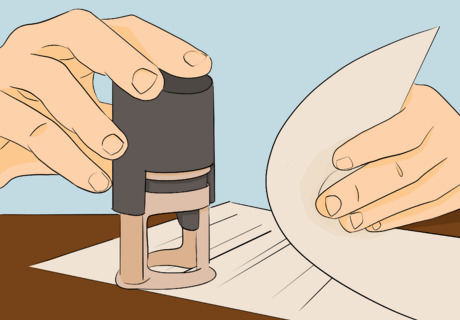
Adhere to local licensing and permit requirements. Your gallery will have to be licensed to operate as business. The exact requirements for doing so vary by location, but at minimum you will need a business license issued by your city or state. The best way to find out what you need is to contact your local branch of the Small Business Administration (SBA) or an equivalent organization that offers help to small businesses. Try searching online for your location and "business licensing" to locate a government website that will explain what is required of you. You will need additional permits or licenses if you serve food or alcohol in your gallery.

Figure out your taxation requirements. As a business, you will need to collect taxes from customers, pay taxes on your employees' wages, and file annual tax returns. Start by registering with your state to collect sales taxes. This is handled differently in each state so search online for the relevant tax authority in yours. Your tax filing requirements vary based on your business structure. See the IRS's guide for small business taxes at https://www.irs.gov/businesses/small-businesses-self-employed. To pay employees and (in most cases) to file taxes, you will need and Employer Identification Number (EIN) from the IRS. Visit their website to apply for one (it's free to do so).
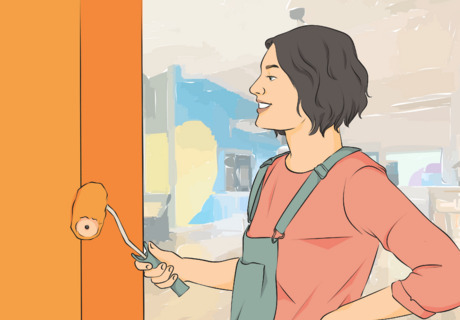
Remodel the interior to fit your design. Repaint and remodel the inside of your space to match your design that you thought up earlier. Work with the space you have, taking advantage of unique features and covering up flaws. Do as much of this work yourself as you possibly can to save on costs. And remember, when you're just starting out, the quality of the art is much more important than the quality of your gallery space. Focus on the art and the money for cosmetic improvements will come.
Opening Your Gallery

Hire professional staff. Art gallery staff often includes a curator or a manager, who can help select art for the gallery and choose where and how to display it. A receptionist or office assistant will also be necessary to help with the telephones, paperwork, scheduling, give out information, and greet and welcome people into the gallery. If you hire a curator or manager, hire one that can help keep your vision on track and work with you to make business choices.

Join the local art community. In order to locate artists, other gallery owners and dealers, and important collectors around your community, you will have to attend important local events. Make sure to join any local organizations, museums, or associations that pertain to art or your particular niche. Contribute your art, money, or gallery space to local charitable events to get your name and your gallery's name out there. This will help you recognize who you need to impress and become acquainted with and also help these people recognize you.

Invite artists to display their work. Artists will want to put their work in galleries that are successful and well known. A new art gallery may have challenges in wooing artists, since there is no record of accomplishment yet. Network in the art community to get to know artists, and select new artists who will be anxious to give their work exposure. They might take a chance on the your new gallery if you are willing to take a chance on them. As your knowledge of your specific niche and of the art community grows, you will become better at identifying artists to showcase in your gallery. You will be better able to identify trends and capitalize on them before your competitors.

Create good working relationships with your artists. This will help you in understanding and promoting their work. It is only by becoming recognized and celebrated among artists that you will be able to showcase the best work. Work on attracting and keeping artists by displaying honestly and integrity in all of your transactions and interactions with them. In addition, always remember to pay your artists within the time specified in your contracts, if not earlier. Maintaining these relationships may also ensure that you remain their gallery of choice even when their work gains more recognition.

Focus on making sales. Look at your collections through a business lens, not simply an artistic one. It is important to display art that you like, but more important to display art that will sell. Remember, you have to keep the lights before you can sell the art that you want to sell. Use your knowledge of art the market to choose investment pieces and art that will sell well given your market and clientele. Also remember to stay consistent between shows in your themes and levels of accomplishment of your artists. Visitors don't want to be confused by your inconsistency, as generally the art is confusing enough to them.
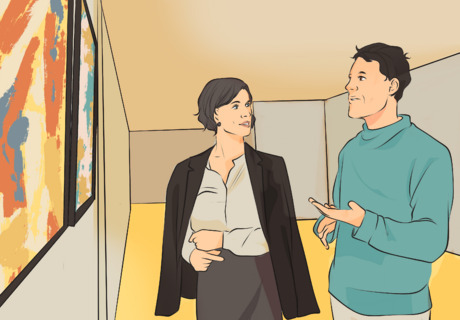
Price your art reasonably. Art valuations are such that it would be easy for a gallery to justify charging absurdly high prices for art, even if that price has no grounding in reality. To actual make sales though, you will need a legitimate reason to charge what you do for each piece. When customers ask, explain that the artist has a show at a big museum, that their work usually sells in this price range, that their last show sold out quickly, or another concrete reason for the price. Customers, even those buying for the emotional experience of the art alone, want to know they aren't wasting their money. Also, when pricing your pieces, stay consistent throughout your shows. That is, don't showcase art that costs $100,000 in one show and then $1,000 pieces in the next. This will alienate customers at both price levels. Use your knowledge of market prices and your customers' purchasing power to price your art competitively. In many cases, you will be working for relatively small margins. However, a great dealer on the forefront of a new trend can make high-margin sales.

Get the word out. A new art gallery needs to get a lot of attention before it opens, or soon after. Host a ribbon cutting ceremony, a formal art gallery opening with a reception, or an informal party to launch the art gallery. Make sure members of the local media are informed and invited to all events. Do a little advertising in print, on the radio, through television and online. Develop marketing materials such as brochures and post cards, and launch a website. Once the art gallery opens, the marketing and public relations requirements will not cease. Word of mouth is a powerful tool and networking is essential. Use your websites as another venue for displaying your collection. Include high-quality images of the art, descriptions of the piece, and artist bios online.
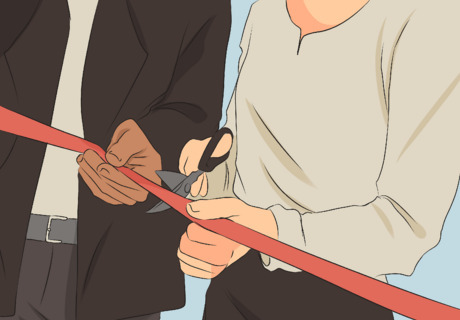
Hold an opening event. Plan an event for opening your gallery and getting your name out there. For example, you can hold an event that showcases a group of similar artists. Invite the artists, your friends, and prominent members of the art community in your area. If possible, sell some of the pieces in the show to friends beforehand. Having pieces marked as sold might drive other attendees to buy other works.

Create and maintain a social media presence. Establish profiles on sites like Facebook, Twitter, Instagram, Pinterest, and other social media sites to connect with your visitors and promote your showings. Make sure that everything you post in some way drives potential customers to your gallery and adheres to your vision.

Build up a group of return customers. One the best ways to stay in business through the years is to cultivate a reliable customer base. These collectors understand and enjoy your particular specialization and are building collections by buying pieces from your gallery. Maintain and develop your own knowledge of your niche over time, and strive to get ahead of the curve on new artists and movements. Your group of collectors will appreciate your hard work and come to recognize you as an experienced and expert dealer. Make sure to avoid the trap of creating a group of non-paying adorers. That is, recognize people who show up to your gallery events and fail to buy anything time after time. Your gallery should not be your own personal social club for friends. Instead, make sure you keep your focus on the greater art community, drawing in new customers and gaining recognition outside of your social circles. Cater to new customers and actively seek their patronage. Keep up with your customers and art critics by sending out a newsletter or announcements once or twice a month.

Practice good salesmanship. Good salespeople know that the best way to make a sale is to know your customer first. So, start your conversations with visitors by working to assess their own interests and knowledge level. From here, you can change your own strategy to meet their needs within the range of their own experience level. Also, when talking about a piece, don't just say how much you like it or how great the artists is. Instead, discuss its relevance and significance. For example, talk about what the piece is trying to say, what concepts or movements it is inspired by, why it is worth owning, and how it can improve the visitor's own life.

Keep your head above water. In the beginning, it will likely be difficult to pay the bills as you build a reputation and customer base. You'll likely have to get creative and offer up additional products or services from your gallery in order to stay in business. For example, many galleries also sell inexpensive prints or posters, and some may also sell clothing or products made by local artisans. As the gallery owner, you can also work as an independent designer or carry another part-time job to make ends meet. Finally, you may also be able to rent out gallery space to artists or art dealers. Just try anything you can to keep your gallery open until you can focus on your collection full-time.


















Comments
0 comment